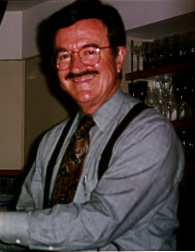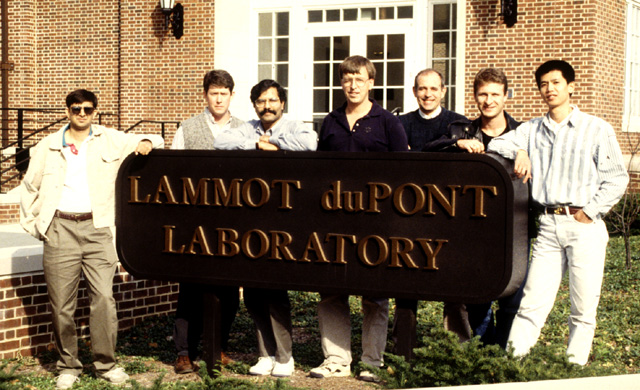 1996 ASMS and
1996 ASMS and  1997 ASMS conferences.
1997 ASMS conferences.


 THIS!
THIS!

CURRENT RESEARCH
Several unique instruments have been constructed at the University of Delaware to address these questions. These include three ion-neutral crossed-beam appratuses, namely:
This research has radically altered our understanding of energy deposition in tandem mass spectrometry. The widely-held general concept that high energy collisions largely involve electronic excitation and low energy collisions involve only vibrational excitation have been demonstrated to be completely incorrect. In special circumstances the conversion of translational energy into internal energy to fragment molecular ions is more facile by five orders of magnitude than is predicted by simple theories for energy transfer. Further it appears that MS/MS mechanisms are generally impulsive and that angular scattering is a common characteristic in tandem mass spectrometry. This is a major reason that experimental strategies--choice of collision gas and collision energy, for example--are often quite different for solving the same structural problem using different types of mass spectrometers.
Most of our research has involved molecular cations of small molecule model compounds chosen as representative of classes of molecules which have been widely investigated in mass spectrometry. Recently we have begun investigation of multiply-charged cations for which the coulomb explosion of collisionally-activated ions is an important reaction channel. The relative kinetic energy of the product ions directly measures the average distance between the charges when the bond between the two fragments is broken. We are testing whether this approach can provide information on sites of protonation in model compounds with highly basic groups and in small peptides.
An overview of this research is contained in the abstract of a talk given in 1995 when Dr. Futrell received the Delaware ACS Research Award.
Recent research
is described in abstracts for the  1996 ASMS and
1996 ASMS and  1997 ASMS conferences.
1997 ASMS conferences.
K. Qian, A. Shukla and J. Futrell, "Electronic Excitation in Low Energy Collisions: A Crossed-Beam Tandem Mass Spectrometric Study of the Collision-Induced Dissociation of Nitromethane Ion," J. Am. Chem. Soc. 113, 7121 (1991).
R. Tosh, A. Shukla and J. Futrell, "Elaboration of an Impulsive Model for Collision-Induced Dissociation: Application to CS2+ + Ar --> S+ + CS + Ar," J. Phys. Chem. 99, 15488 (1995).
A. K. Shukla, R. E. Tosh, Y. B. Chen and J. H. Futrell, "Molecular Dynamic Mass Spectrometric Study of the Collision-Induced Dissociation of CS2+ Ions at Low and Intermediate Collision Energies," Int. J. Mass Spectrom. Ion Proc. 146/147, 323 (1995).
Comments about this page contact Sergey Rakov (at rakov@udel.edu)